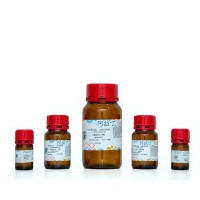When analyzing ribonucleoprotein complexes, it is important to keep in mind that any such complex in solution must coexist with some concentration of the free (uncomplexed) RNA and protein components of the RNP. This can be formalized by the equilibrium equation:
where R represents the free RNA, P the free protein, and RP the RNA-protein complex for the simplest possible case of a 1∶1 molar complex of RNA and protein. Thus, at equilibrium, the distribution of components between free and bound forms is determined by the concentrations of RNA and protein and by the equilibrium binding constant ( K d , or its reciprocal, K a ) which describes the interaction. Formally, for a simple binary complex, K d =[R][P]/[RP]. Of course, a more complex analysis, involving multiple equilibrium constants, is necessary if the RNP contains more than two components. The equilibrium binding constant can be treated as the ratio of the rate constants describing RNP formation and dissociation ( K d = k off / k on ). It is often the case that the association rate constant for an RNA-protein interaction is determined by the diffusion rates of the RNA and protein reactants, and therefore exhibits relatively little variability. When this is true, differences in equilibrium binding constants are directly reflected in corresponding differences in dissociation rate constants.






